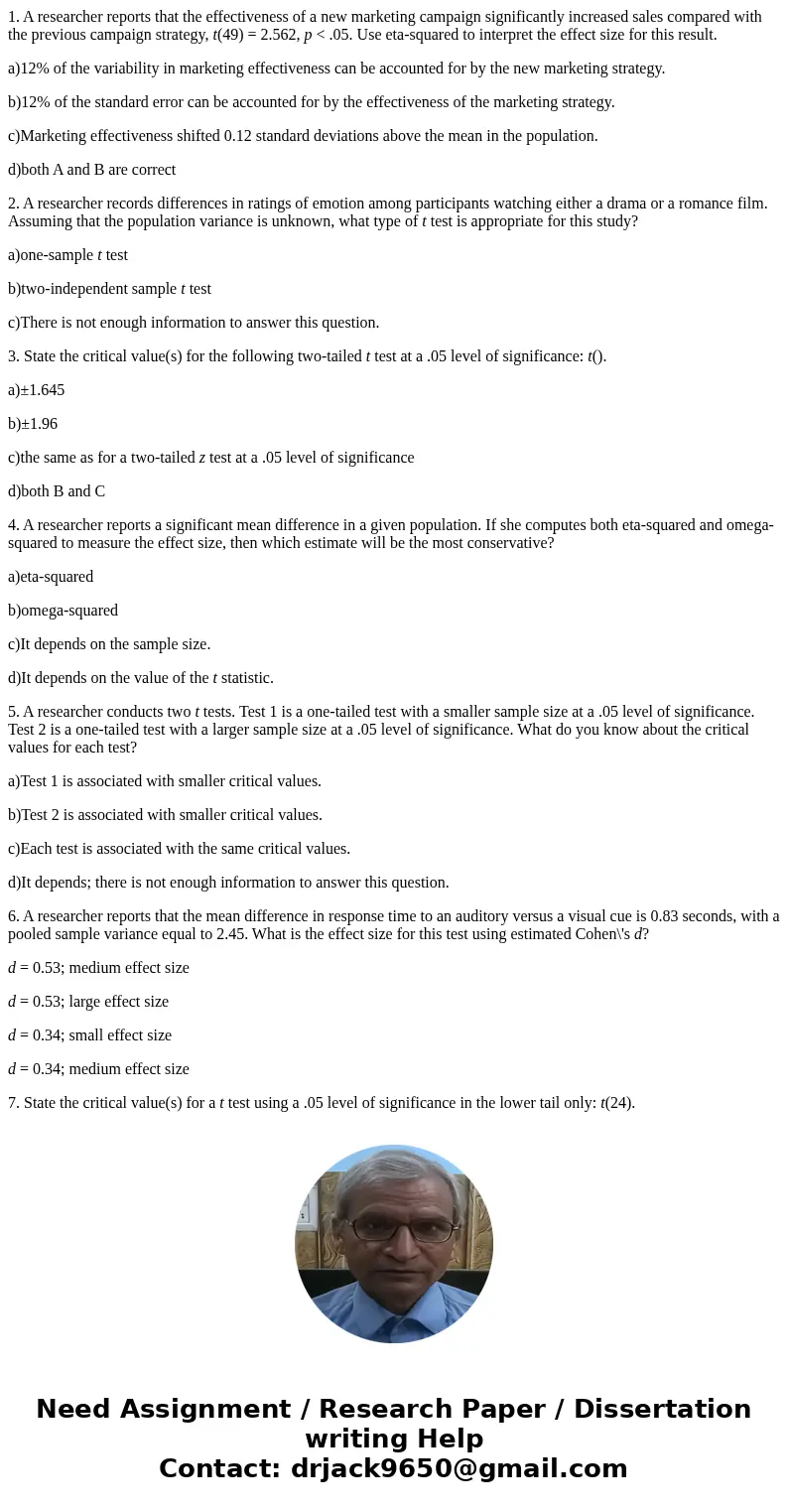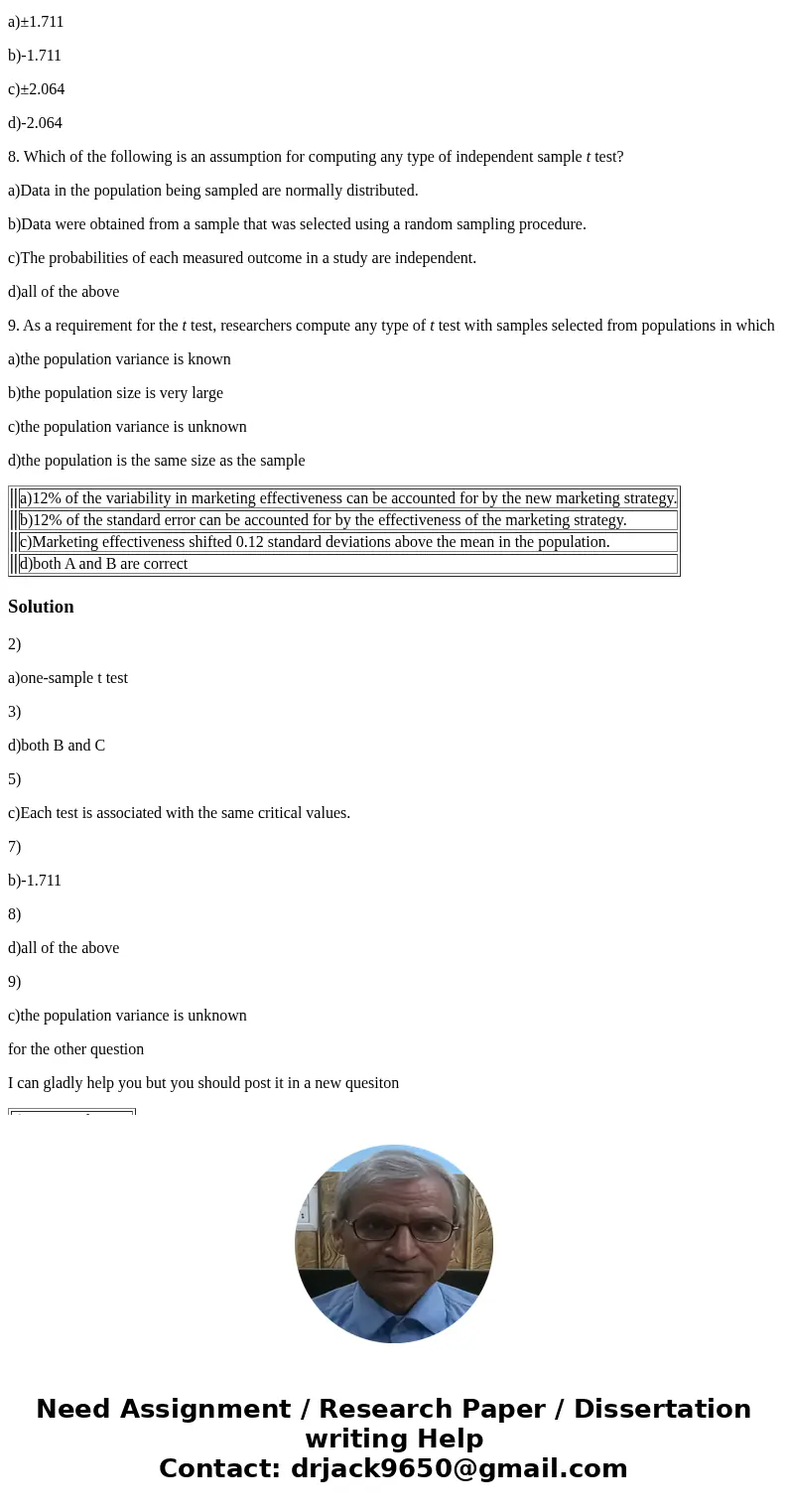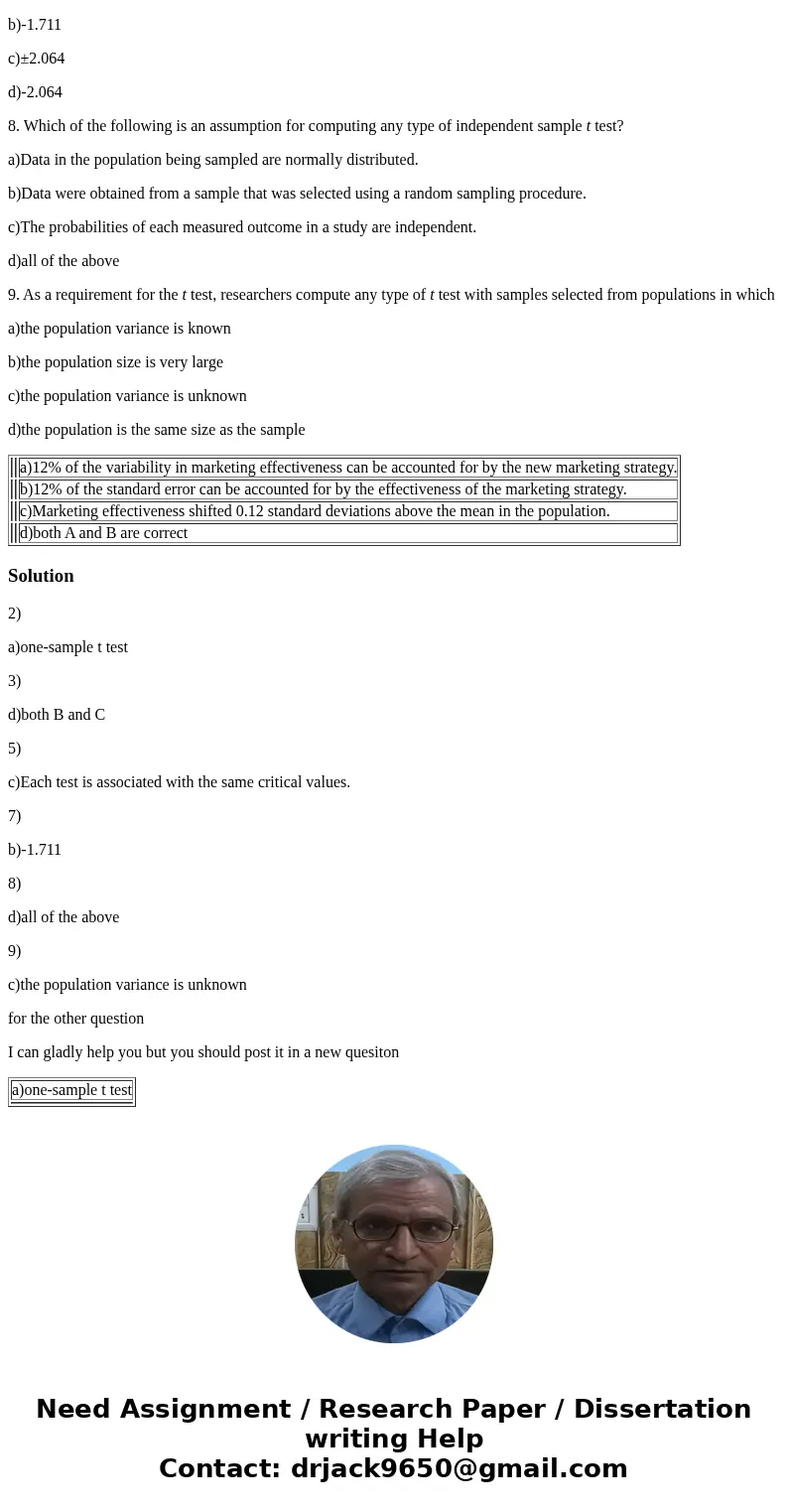1 A researcher reports that the effectiveness of a new marke
1. A researcher reports that the effectiveness of a new marketing campaign significantly increased sales compared with the previous campaign strategy, t(49) = 2.562, p < .05. Use eta-squared to interpret the effect size for this result.
a)12% of the variability in marketing effectiveness can be accounted for by the new marketing strategy.
b)12% of the standard error can be accounted for by the effectiveness of the marketing strategy.
c)Marketing effectiveness shifted 0.12 standard deviations above the mean in the population.
d)both A and B are correct
2. A researcher records differences in ratings of emotion among participants watching either a drama or a romance film. Assuming that the population variance is unknown, what type of t test is appropriate for this study?
a)one-sample t test
b)two-independent sample t test
c)There is not enough information to answer this question.
3. State the critical value(s) for the following two-tailed t test at a .05 level of significance: t().
a)±1.645
b)±1.96
c)the same as for a two-tailed z test at a .05 level of significance
d)both B and C
4. A researcher reports a significant mean difference in a given population. If she computes both eta-squared and omega-squared to measure the effect size, then which estimate will be the most conservative?
a)eta-squared
b)omega-squared
c)It depends on the sample size.
d)It depends on the value of the t statistic.
5. A researcher conducts two t tests. Test 1 is a one-tailed test with a smaller sample size at a .05 level of significance. Test 2 is a one-tailed test with a larger sample size at a .05 level of significance. What do you know about the critical values for each test?
a)Test 1 is associated with smaller critical values.
b)Test 2 is associated with smaller critical values.
c)Each test is associated with the same critical values.
d)It depends; there is not enough information to answer this question.
6. A researcher reports that the mean difference in response time to an auditory versus a visual cue is 0.83 seconds, with a pooled sample variance equal to 2.45. What is the effect size for this test using estimated Cohen\'s d?
d = 0.53; medium effect size
d = 0.53; large effect size
d = 0.34; small effect size
d = 0.34; medium effect size
7. State the critical value(s) for a t test using a .05 level of significance in the lower tail only: t(24).
a)±1.711
b)-1.711
c)±2.064
d)-2.064
8. Which of the following is an assumption for computing any type of independent sample t test?
a)Data in the population being sampled are normally distributed.
b)Data were obtained from a sample that was selected using a random sampling procedure.
c)The probabilities of each measured outcome in a study are independent.
d)all of the above
9. As a requirement for the t test, researchers compute any type of t test with samples selected from populations in which
a)the population variance is known
b)the population size is very large
c)the population variance is unknown
d)the population is the same size as the sample
| a)12% of the variability in marketing effectiveness can be accounted for by the new marketing strategy. | ||
| b)12% of the standard error can be accounted for by the effectiveness of the marketing strategy. | ||
| c)Marketing effectiveness shifted 0.12 standard deviations above the mean in the population. | ||
| d)both A and B are correct |
Solution
2)
a)one-sample t test
3)
d)both B and C
5)
c)Each test is associated with the same critical values.
7)
b)-1.711
8)
d)all of the above
9)
c)the population variance is unknown
for the other question
I can gladly help you but you should post it in a new quesiton
| a)one-sample t test |



 Homework Sourse
Homework Sourse